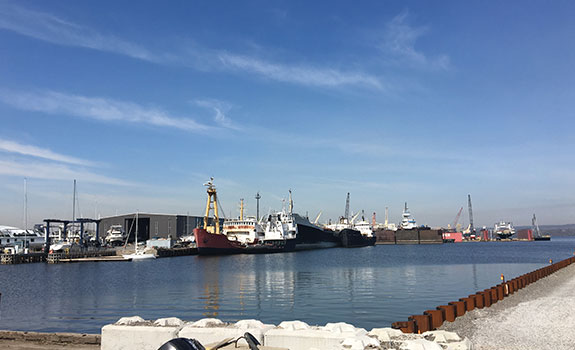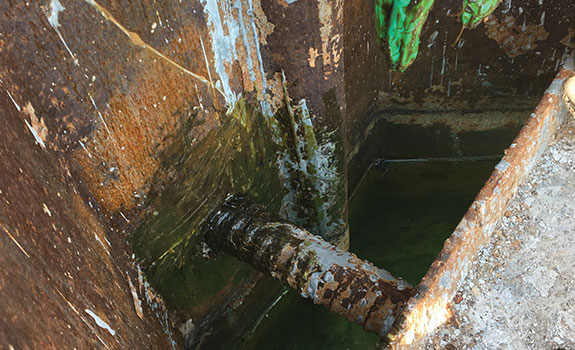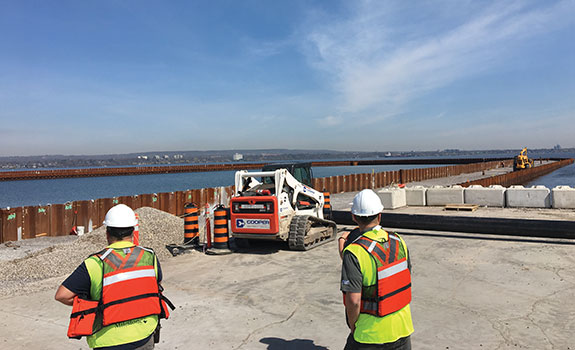CASE STUDY
Two Corrosion Prevention Systems provided with one Denso™ System
Buried Coatings
Project Data
| Location | Ontario, Canada |
| Products | Denso Hi-Tack™ Tape, Densyl™ Mastic |
| Date | 2019 |
Project Details
Long since established as an economic hub in Ontario, Hamilton has a history of heavy manufacturing from steel to Studebakers to having the first ever Tim Horton’s donut shop. Due to heavy industry and redevelopment goals however, some of the waterfront needed environmental remediation and construction. The Hamilton Harbour project has been ongoing and in the process of remediation and redevelopment, a section of the harbour was dredged and two piers designed for construction. During this process, sheet piling was used with anchor rods and wale bolts to secure the structure. A problem arose when holes in the piles where the anchor rods passed were allowing uncontrolled water egress.
This problem was exacerbated by the fact that corrosion of the holes was active and allowing water to escape at a growing pace causing environmental concerns. To address the issue of water exfiltration and corrosion prevention, Denso suggested and supplied three components. First, the failing caulking and rigid foam was removed and the surface cleaned with a wire brush. Then, Densyl™ Mastic was chosen to fill the cavity because of the product’s rigidity and ability to maintain its form even under significant pressure. Then, the rod, mastic and a section of the sheet wall around the orifice were covered with Denso Hi-Tack™ Primer.
This provided additional corrosion inhibition by blocking contact of the substrate with any moisture as well as ensuring long-term adhesion of the tape. Finally, Denso Hi-Tack™ Petrolatum Tape was applied, weatherboard style, onto the rod, over the Densyl Mastic and onto the sheet pile. This system will stand up against the pressure of water and later, endure the installation of backfill during the pier construction process. Additionally, it will prevent corrosion of the steel and expansion of the rod hole and protect the rods and wale bolts for the life of the piers.

The busy Hamilton Harbour

One of the anchor rods passing through the sheet piling

The installation of the sheet piling

The busy Hamilton Harbour

One of the anchor rods passing through the sheet piling




